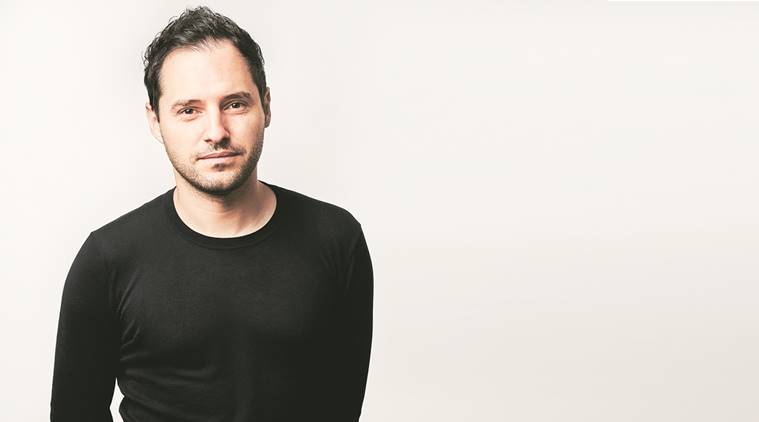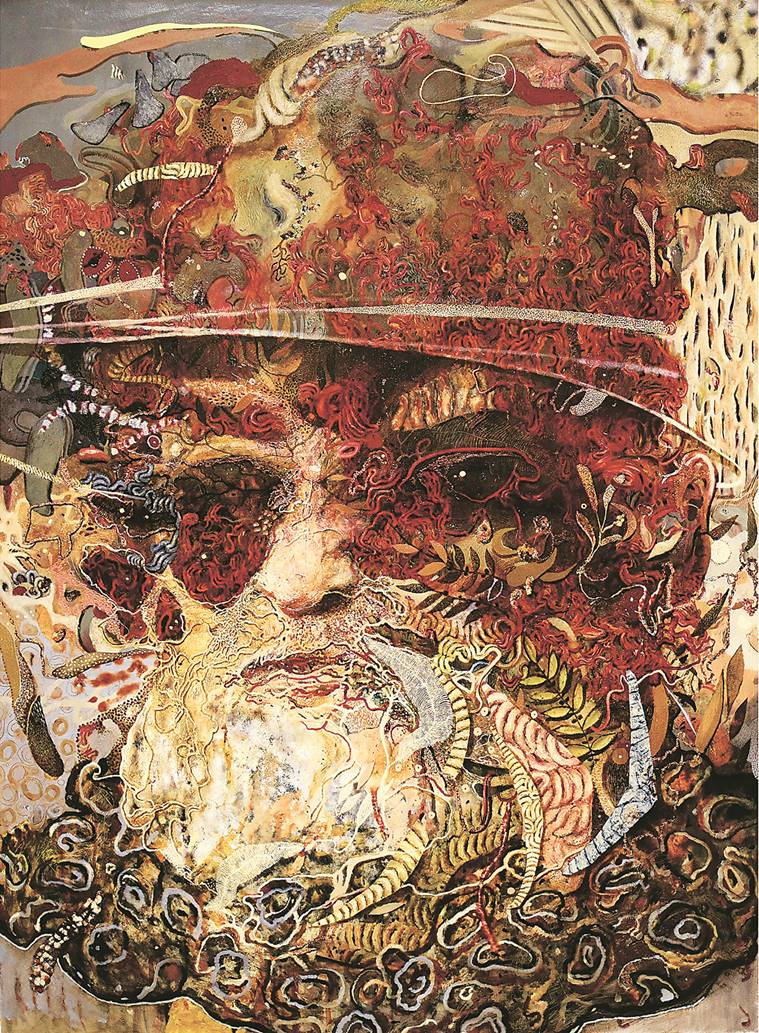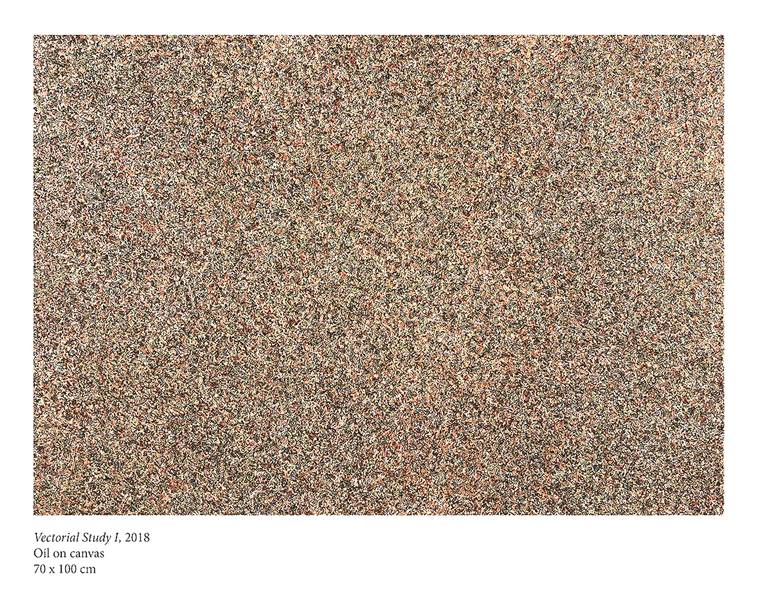The Body Electric
Romanian artist Radu Oreian’s paintings show his attempt to arrive at a unified vision of body and soul

Radu Oreian
The first painting you see, when you enter Mumbai’s Galerie Isa, is what looks like a work resembling the art of the Italian Mannerist painter Giuseppe Arcimboldo, famous for conceiving portraits made up of fruits, vegetables, and even animals. The 16th century artist’s works, amusing and deeply mysterious at once, are however only a touch point for Romanian artist Radu Oreian, creator of the work that is hanging in the Mumbai gallery as part of the exhibition ‘Farewell to the Thinker of Thoughts’. The real inspiration for Oreian’s painting, After a Portrait of Walt Whitman, are the words of the iconic American poet himself. He explains, “I was listening to the audiobook of Leaves of Grass, and his whole philosophy moved me so much. Much of Whitman’s poetry is in praise of nature, and talks about the connection between humans and nature.” That is how, as Oreian began painting, he found himself drawing on forms found in nature — leaves, coral formations and other organic matter — to compose his portrait.
It’s no coincidence then, that the 34-year-old, who is having his first solo exhibition in India, should be so moved by Whitman’s poetry. Leaves of Grass is as much a celebration of the human body, as it is a paean to nature, and this has for long been one of Oreian’s preoccupation as well. “I don’t think you can separate the body and what is inside it, from our conceptions of the mind and soul,” he says. And if you looked carefully through the dense compositions of the larger works hung on the lower floor of the gallery — After a Portrait of Walt Whitman, Kafka in the Orangerie, Philosopher in the Garden of Delights and The Snake Charmer — you’ll see shapes resembling those found inside the human body, whether it is the curves of the viscera or the folds of the brain. It’s almost as if the artist, who currently lives and works in Marseille, France, is willing his art into having a corporeal existence, thus bridging whatever gap might have existed between an idea and living, breathing reality.
The theme of the body takes other forms in the more abstract works that are hung in the upper floor of the gallery, and finds the most beautiful expression in Vectorial Study I. Here, the artist has used three shades of colour which, to him, represent the skin, flesh and bone, to create a repetitive pattern of tiny curls on the canvas. He refers to the resulting work as a “collective portrait”, an assertion of the most basic thing — the body — that is common to all human beings, regardless of what other differences we may see as separating us. In Vectorial Study II, with its multiplicity of tones and texture, Oreian has found another way of giving an almost tactile form to the inexpressible.
“Whenever we feel a strong emotion, the body finds a way of expressing it, such as through goosebumps on your skin,” he explains, “So what you see in the painting, is me trying to remember what my body experienced when I was in the grip of certain emotions.” He attempts a similar effect in the strange, lace-like forms of Study for Goosebumps.
Unlike the more figurative works, his abstract works, he says, are almost meditative for him to create. This is perhaps most beautifully expressed in the two works that give the exhibition its name — Farewell to the Thinker of Thoughts I and Farewell to the Thinker of Thoughts II. In these works, drawing inspiration from teachings found in the Upanishads about the nature of infinity, Oreian has made dense grids, populated with points of paint, each different from the other. “It seems cliché to say that, but when I’m making them, the process has to be one in which I can get lost. The language for the work has to be beyond intuition, even,” he explains.
‘Farewell to the Thinker of Thoughts’ is on view at Galerie Isa, Kala Ghoda, till November 10






















 The Snake Charmer
The Snake Charmer Portrait of Walt Whitman
Portrait of Walt Whitman Vectorial Study
Vectorial Study
No hay comentarios:
Publicar un comentario